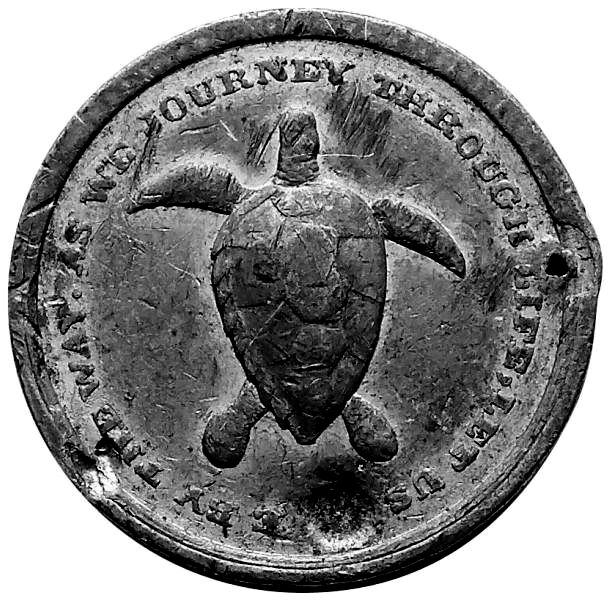Most of you either have never heard of the Hoboken Turtle Club or know it as that bar (sorry, it just closed). Either way, the Hoboken Turtle Club is actually so much more than that — it’s actually a part of Stevens history.
It all started back in 1796 with John Stevens, a member of the Stevens family. He was a former captain of George Washington’s Continental Army. Colonel Stevens was a jack-of-all-trades, as he was an inventor, lawyer, and treasurer for New Jersey. He had led a lucky life and had enjoyed a sizable fortune. He also had prized European chickens. This seems random, but it’s not, for the chickens were getting poached by… snapping turtles! The riverfront of John Stevens’ estate was being overtaken by the turtles, which Stevens described as “conniving cold-blooded reptiles.”
Stevens sent out a shepherd boy to look after his turtles. The job turned out to be tougher than anticipated. The shepherd reported that the turtles were grabbing the chickens by the legs and pulling them into the river. In fact, a New York Times article from 1878 described the situation: “a huge turtle, with an arched back completely covered with moss, crept out of the river, seized an unsuspecting hen by the leg and dragged her off to his felonious retreat on the river bottom.”
So what does Stevens do? Does he move the chickens to a more secure location? No, of course not! He declares war on the turtles and invites all his rich buddies to feast on some delicious turtle soup. According to the same New York Times article, “Each man cut the throat of his own turtle.” The feast quickly turned into a club where the eating and partying would go on for days.
The original club consisted of various important people from Manhattan, some of whom were George Washington, Thomas Jefferson, and Benjamin Franklin. Apparently the club is the oldest club in American history. The club was so popular that the population of snapping turtles in the Hudson went extinct.
Around 1878, the club events were moved into Manhattan, hosted in Tammany Hall, in the Lower East Side. Currently there is a club there and at the club’s entrance is a giant turtle shell with the letters “H.T.C.” imprinted in it and hung from the balcony of the locale, signifying the Hoboken Turtle Club.
Over time, the club was renamed the New York Turtle Club, moved to several different locations, and invitations to the club were highly coveted. Around the 1890s, membership was down, yet the feasts kept going! John Tarbell manned the soup kettle for the club at the end of the 19th century. Tarbell’s talents were acclaimed by turtle aficionados. His turtle soup recipe, a “state secret,” was shared only with the president of the organization. Two days before the guests arrived, Tarbell would enter the cookhouse with his turtle. One would think that turtle soup would be heavily compromised of turtles; however, Tarbell shared with a reporter, “You see, this is turtle soup of the best kind, but there’s not much turtle in it. It wouldn’t do you know. Too much turtle spoils turtle soup…If 1,500 turtles made any better soup than six; we’d have the 1,500. But they wouldn’t; they’d spoil it. It would be so rich, nobody could eat a cupful of it.” His recipe consisted of some vegetables, which were potatoes, turnips, cabbage, radishes, peas, beets, tomatoes, cucumbers, and cauliflower. It was said that the soup was known to be so rich in taste that nobody was able to have more than two bowls.
Turtle Club members also contributed to the preparation of the food. In fact, rumor has it that “important men” like John Jay, Alexander Hamilton, and Aaron Burr adopted the rule that no one could partake of turtle unless he had taken some part in its preparation. Dinner was served at 4 p.m. in the afternoon and consisted of boiled eggs, brandy, and, drum roll please… you guessed it, turtle soup!
Even after its colorful past, the history of the Hoboken Turtle Club was forgotten after membership diminished in the 1940s.
So, if you didn’t know any Stevens-related history, now you know some of the colorful history of John Stevens.

Be First to Comment